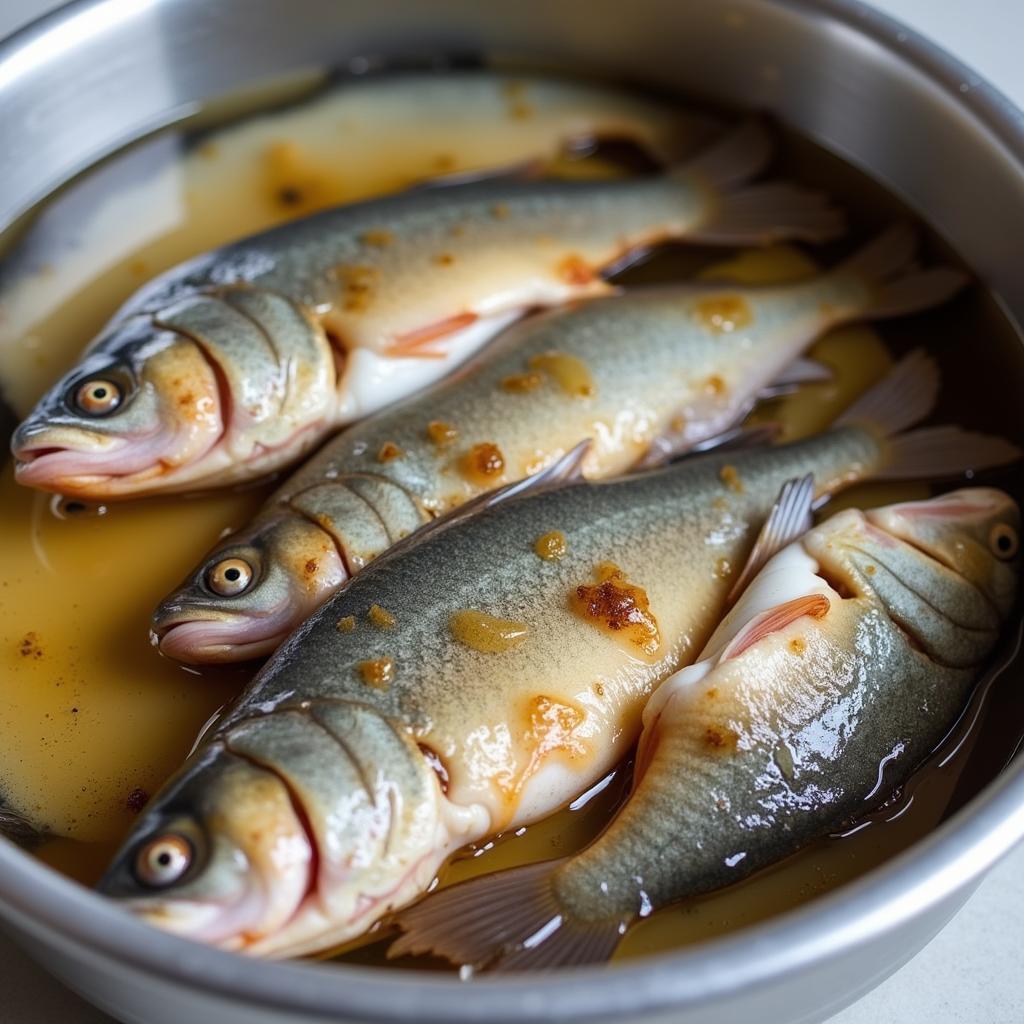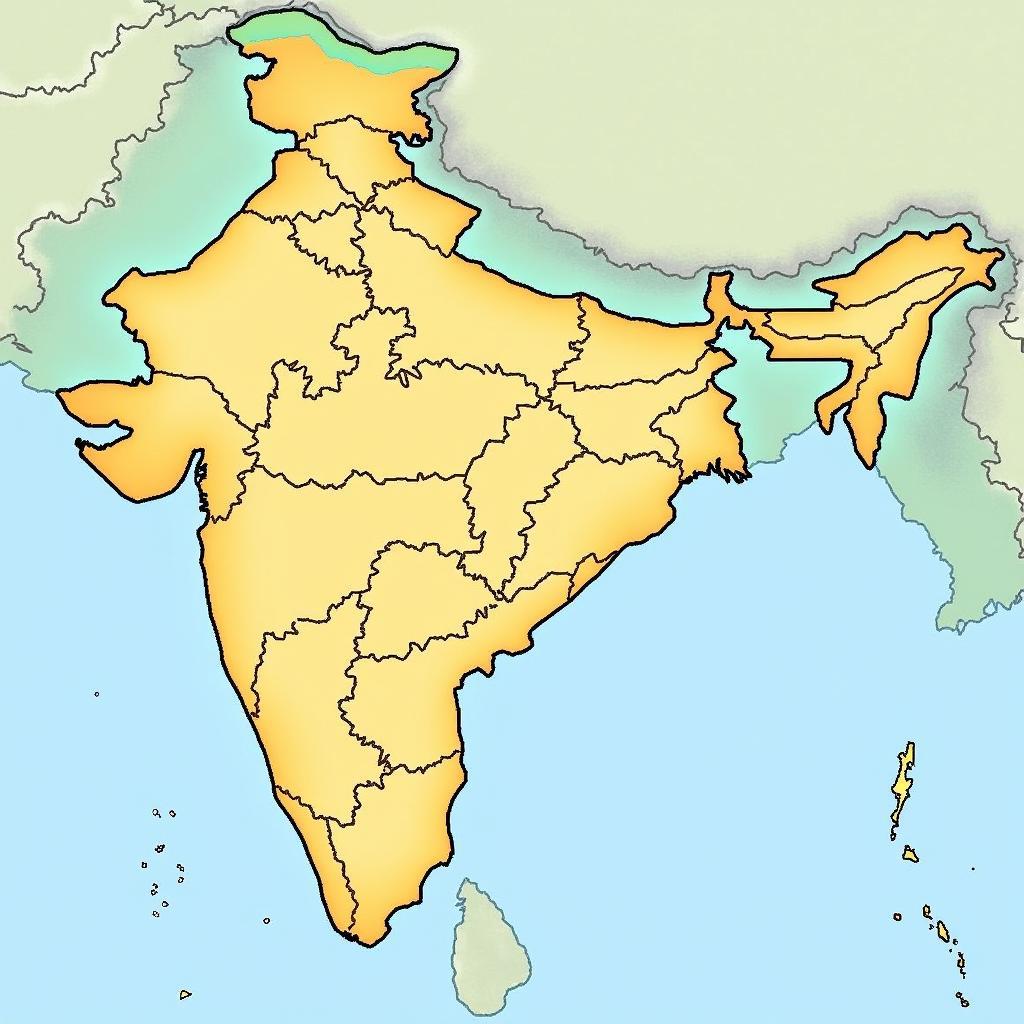Exploring Delicious African Dry Fish Recipes
Dry fish, a beloved ingredient across Africa, features in countless dishes across the continent. From rich stews to flavorful sauces, its unique flavor adds depth and complexity to a variety of meals. Whether you’re seeking to recreate familiar tastes or explore new culinary horizons, African Dry Fish Recipes offer a delightful adventure for your taste buds.
The Significance of Dry Fish in African Cuisine
Dry fish holds a significant place in African food culture, not only for its preservation qualities but also for the distinctive umami flavor it imparts. In many regions, especially coastal communities, drying fish is a traditional method of preserving the bounty from the sea, ensuring access to protein-rich food throughout the year.  Dried Fish Market in Africa
Dried Fish Market in Africa
Popular Types of Dry Fish Used in African Cooking
Various types of fish are sun-dried, smoked, or salted to create the flavorful ingredient found in many African kitchens. Some popular choices include:
- Stockfish: Made from cod, haddock, or similar white fish, stockfish boasts a firm texture and strong flavor, commonly used in soups and stews.
- Bonga: A small, oily fish commonly smoked and used in West African dishes, lending a smoky depth to stews and sauces.
- Catfish: Dried catfish, either smoked or fried, is a staple ingredient in many parts of Africa, featuring prominently in stews, soups, and even as a crunchy snack.
Preparing Dry Fish for Cooking
Before incorporating dry fish into recipes, it typically requires rehydration. This process helps to soften the fish and remove any excess salt. The most common method involves soaking the fish in hot water for 30 minutes to an hour, changing the water several times.  Soaking Dried Fish in Preparation for Cooking
Soaking Dried Fish in Preparation for Cooking
A Taste of Africa: Popular Dry Fish Recipes
## Nigerian Egusi Soup with Dry Fish
Egusi soup, a staple in Nigerian cuisine, gets a flavor boost from the addition of dry fish. This rich and creamy soup features ground melon seeds, leafy greens, and a medley of spices, creating a symphony of flavors.
Ingredients:
- Ground egusi seeds
- Palm oil
- Assorted meats (beef, goat, or fish)
- Dry fish (soaked and cleaned)
- Ground crayfish
- Chopped onions
- Blended peppers (scotch bonnet, habanero)
- Seasoning cubes
- Salt to taste
- Water or stock
- Chopped spinach or bitter leaf
Instructions:
- Season and cook the assorted meats with onions, peppers, and seasoning cubes until tender.
- Add the soaked dry fish to the pot with the cooked meats and continue to simmer.
- In a separate pan, heat palm oil and sauté onions until fragrant. Add the ground crayfish and blended peppers, cooking for a few minutes.
- Gradually incorporate the ground egusi seeds into the palm oil mixture, stirring continuously to prevent lumps.
- Pour the egusi mixture into the pot with the cooked meats and dry fish.
- Add water or stock to achieve desired consistency. Simmer for 20-30 minutes, allowing the flavors to meld.
- Stir in the chopped spinach or bitter leaf during the last few minutes of cooking.
- Serve hot with fufu, pounded yam, or [African chapati bread recipe].
## Ghanaian Kenkey with Fried Fish and Hot Sauce
Kenkey, a fermented corn dough dumpling, pairs perfectly with fried dry fish and a fiery hot sauce, creating a delightful interplay of textures and flavors.
Ingredients:
- Fermented corn dough (for kenkey)
- Dry fish (soaked and cleaned)
- Salt and pepper to taste
- Oil for frying
- Tomatoes, onions, and peppers (for hot sauce)
Instructions:
- Prepare the kenkey according to your preferred recipe, typically by steaming or boiling the fermented corn dough.
- Season the soaked dry fish with salt and pepper.
- Heat oil in a frying pan and fry the fish until crispy and golden brown.
- Blend together tomatoes, onions, peppers, and seasonings to make a hot sauce.
- Serve the hot kenkey with the fried dry fish and a generous helping of the spicy hot sauce.
 Ghanaian Kenkey with Fried Fish and Hot Sauce
Ghanaian Kenkey with Fried Fish and Hot Sauce
Tips for Cooking with Dry Fish
- When choosing dry fish, inspect it for quality, ensuring it’s free from any unpleasant odors or mold.
- Experiment with different soaking times for dry fish, depending on the type and your preference for saltiness.
- Don’t discard the soaking liquid entirely. Strained, it can add a depth of flavor to soups and stews.
- Pair dry fish with aromatic ingredients like onions, garlic, ginger, and chilies to create flavorful dishes.
- Balance the strong flavor of dry fish with acidic ingredients like tomatoes or lemon juice.
Conclusion
African dry fish recipes offer a culinary journey into the heart of the continent’s flavors. From the rich and hearty stews to the spicy and tangy sauces, these recipes highlight the versatility and deliciousness of this unique ingredient. So, embark on a culinary adventure and explore the wonderful world of African dry fish dishes!
FAQs about African Dry Fish Recipes
Q: Where can I buy dry fish?
A: African grocery stores or online retailers specializing in African or international foods are good places to find a variety of dry fish.
Q: Can I use fresh fish instead of dry fish in these recipes?
A: While fresh fish can be used, it won’t replicate the distinct flavor profile that dry fish brings to these dishes.
Q: How long can I store dry fish?
A: Properly stored dry fish can last for several months. Keep it in an airtight container in a cool, dry place.
Q: Is dry fish healthy?
A: Dry fish is a good source of protein and omega-3 fatty acids. However, it can also be high in sodium, so moderation is key.
Looking for more culinary inspiration? Explore these other delicious recipes:
- [African dry salad]
- [African ladies finger]
- [African fried rice recipe]
Need help? Contact us!
Phone Number: +255768904061
Email: kaka.mag@gmail.com
Address: Mbarali DC Mawindi, Kangaga, Tanzania.
We have a 24/7 customer service team.


